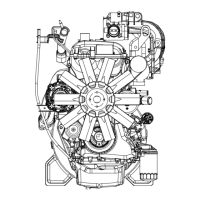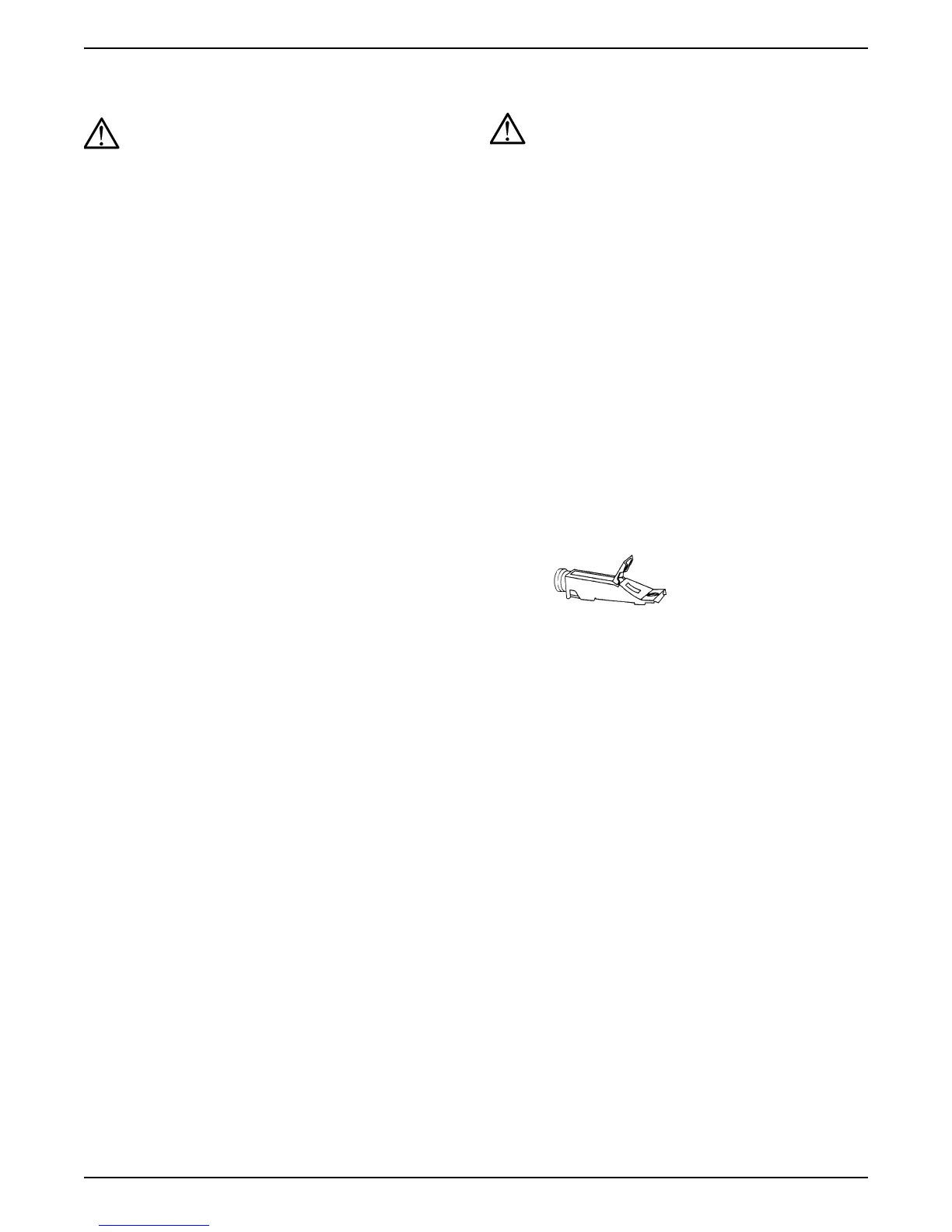DSG-423 COOLING SYSTEM
05-5
DIAGNOSIS AND TESTING
WARNING: REFER TO CAUTIONS AND WARNINGS
AT THE BEGINNING OF THIS SECTION.
Begin diagnosis by verifying the customer’s concern by
operating the engine to duplicate the condition. The
most frequent cooling system complaints are leakage
and overheating. Either of these problems will soon
render the engine inoperable.
Perform a visual inspection. If the inspection reveals an
obvious concern that can be readily identified, repair as
necessary. If the concern remains after the inspection,
determine the symptom(s) and go to the Symptom
Chart. The Symptom Chart lists cooling system
problems, their possible cause and recommended
correction.
Visual Inspection
Check for leaks or damage at:
• all hoses, connections and hose clamps
• radiator seams, core and drain petcock
• all block core plugs and drain plugs
• edges of all cooling system gaskets
• transmission oil cooler (if equipped)
• coolant pump shaft and bushing
• thermostat, head and intake manifold gaskets
• coolant pump
• degas bottle
• heater core (if equipped)
• fan and fan clutch
• engine coolant temperature sensor and wiring
• drive belt.
NOTE: A small amount of antifreeze coming out the
coolant pump weep hole may be considered normal.
Examine oil dipstick for evidence of coolant
contaminated engine oil (white milky appearance).
check radiator for evidences of oil in coolant (leakage at
transmission oil cooler if equipped).
Some engines use an ethylene glycol base antifreeze
solution to which the manufacturers have added a dye
color. The dye color makes the antifreeze solution an
excellent leak detector. If this type of solution is not
being used in the cooling system, a vegetable dye may
be added to aid in locating external leakage.
Coolant Inspection
WARNING: REFER TO CAUTIONS AND WARNINGS
AT THE BEGINNING OF THIS SECTION.
Check level and condition of coolant:
• A dark brown color could indicate a stop leak was
used.
• A light or reddish brown color indicates that rust
may be present in the cooling system. Flush the
system and refill with the correct mixture of dis-
tilled water and premium engine coolant.
• An iridescent sheen on top of the coolant could
indicate a trace of oil is entering the system.
• A milky brown color may indicate that either en-
gine oil or transmission fluid is entering the cool-
ing system. If transmission fluid is suspected, it
may be entering through the transmission cooler
in the radiator. If engine oil is suspected, the
cause may an internal leak in the engine.
Coolant Range Check
If the engine coolant appearance is acceptable, test the
engine coolant freezing point and concentration level.
The antifreeze concentration in a cooling system can be
determined by using a suitable hydrometer or a battery/
antifreeze tester.
The freezing point should be in the range -45°C to -23°C
(-50°F to -10°F). If the equipment is run in cold climates
colder than -36°C (-34°F), it may be necessary to
increase the coolant concentration to get adequate
freeze protection.
Maximum coolant concentration is 60% coolant to 40%
distilled water. If coolant tests too strong, remove some
of the coolant and ad distilled water until the readings
are acceptable.
Minimum coolant concentration is 40% coolant to 60%
distilled water. If coolant tests too weak, drain some
coolant out and add straight coolant until readings are
acceptable.

